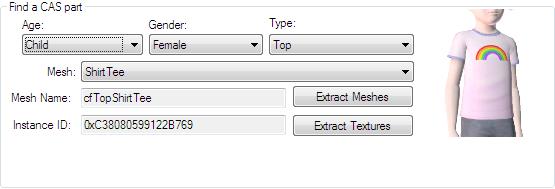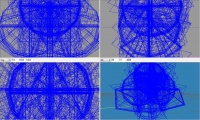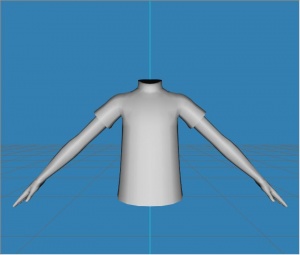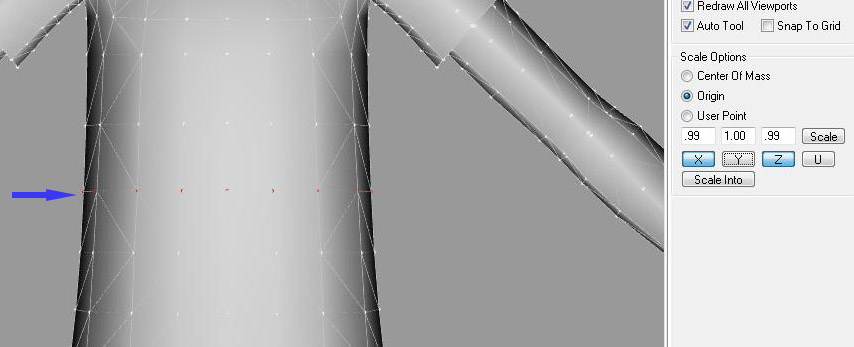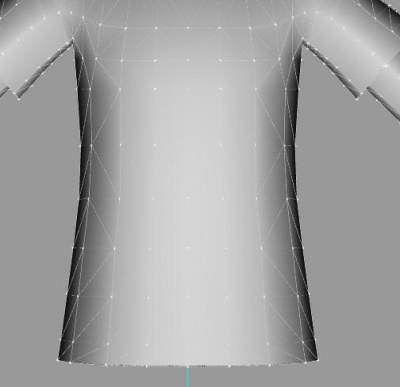Difference between revisions of "Tutorials:CAS Creation From Start-To-Finish - Meshing"
| Line 33: | Line 33: | ||
Now that we have our meshes, it's time to start the physical meshing using our 3D Modeling program. Remember, you must have the GEOM import/export plugins installed in order to get the meshes into the modeling program. So, take a moment now to verify you have everything installed! | Now that we have our meshes, it's time to start the physical meshing using our 3D Modeling program. Remember, you must have the GEOM import/export plugins installed in order to get the meshes into the modeling program. So, take a moment now to verify you have everything installed! | ||
| − | In Milkshape go to '''File -> Import -> Q Mesh Sims 3 Geom Importer'''. | + | In Milkshape go to '''File -> Import -> Q Mesh Sims 3 Geom Importer'''. Let's navigate to our three mesh files and select the '''lod 1''' mesh. A box saying "Unable to locate bone file. Default skeleton used." will pop up, simply click "Ok". |
{{CheatDetail | {{CheatDetail | ||
| Line 42: | Line 42: | ||
===Scale/Move=== | ===Scale/Move=== | ||
| − | Don't add/delete | + | Upon successful import, we should be greeted by our mesh.[[File:Daltut-meshingvanilla.jpg|300px|left]] The method that we are going to use is the '''Scale and Move''', the same method I demonstrated in my [http://thesimsupply.com/showthread.php?tid=289 Quick Meshing] video tutorials. The basic idea is that we are going to reshape our mesh by '''scaling''' and '''moving''' bits and pieces of the mesh, '''ONLY'''. '''<font color="red">That means absolutely under NO CIRCUMSTANCE should you add or delete polys/vertices from the mesh.</font>''' The reason why is because the scale and move method allows us to create fantastically custom meshes, without having to create new moprhs for them, which is a pain. |
| + | |||
| + | Don't get me wrong, you can delete parts from meshes and even add new pieces from other meshes, this is called '''Frankenstiening'''. However, frankenstiening requires custom morphs to be made, as well as other intricate bits. So, that technique is best left for more advance creators, and will be covered in a separate tutorial. In short....'''<font color="red">Under NO CIRCUMSTANCE should you add or delete polys/vertices from the mesh.</font>''' Are we clear? | ||
| + | |||
| + | '''So to begin our meshing''', we want to get it into a workable view. Right-click on the mesh window and set it to a '''front projection '''(Projection->Front). To make it easier to see what we're doing, let's also apply a wireframe overlay to the mesh by right-clicking and selecting '''wireframe overlay'''. | ||
| + | |||
| + | I personally think that the torso of the female mesh is too square for a girl's frame, so I want to add a slight curve. To do this, I'm going to scale down the waist a bit. | ||
| + | |||
| + | We start by selecting a row of vertices, and click on the scale button. Make sure you have '''select'''-> '''by vertex''' chosen. In the three scale ratio boxes, we want to type '''.99''' as the X and Z scale ratio. | ||
| + | |||
| + | {{CheatDetail | ||
| + | |desc=Any scale ratio less than 1.00 will shrink the mesh, and vice versa with numbers greater than 1.00. A scale ratio of 1.00 itself, with keep the mesh neutral in that direction.}} | ||
| + | |||
| + | Since our scale ratio is .99, that means we are scaling in our mesh 1 percent [(1.00 - .99) x100] inward on the X and Z axis. | ||
| + | |||
| + | [[File:Daltut-scalemove-vanilla.jpg]]<br clear="all">Notice how the Y axis's ratio is set to 1.00. This means that we won't be scaling the Y axis, which you want to avoid. Alternatively, you can just click the Y button to deactivate that scale ratio altogether. | ||
| + | |||
| + | {{CheatDetail | ||
| + | |desc=The '''X axis''' scales/moves the mesh from '''left to right'''. The '''Y axis''' scales/moves the mesh '''up and down'''. And, the '''Z axis''' scales/moves the mesh from '''front to back'''..}}<br clear="all"> | ||
| + | [[File:Daltut-scalemove-slimedtorso.jpg|right|400px]] | ||
| + | Once you have decided on the row you want to scale and the appropriate scale ratio, click the smaller scale button (the one by the scale ratio boxes). Notice how our mesh has been pulled in slightly. Repeat this process until you get the shape you desire. Remember you can also use higher values, such as 1.01, to widen the mesh as you see fit. | ||
| + | |||
| + | After a little toying around, my mesh now has a slightly curved waist to fit a more girlish figure. | ||
| + | |||
| + | [[File:MWSnap019 2011-08-06, 00 48 12.jpg|left|300px]] | ||
| + | |||
| + | I also want to make my shirt longer, so I'm going to select rows of veritces (one-by-one) and pull them down until the shirt is the desired length. | ||
| + | |||
| + | '''''To make sure you don't knock the mesh askew when pulling it down, you can set it to where you can only move the mesh in the Y direction. To do this click on the Move button, and deselect the X and Z button.''' | ||
| + | |||
| + | Since my shirt is now longer, I'll have to '''adjust''' to where it '''won't clip into pants and skirts'''. To do this open CTU and locate the child female nude mesh; follow the same extract/import procedures used earlier to get the mesh into Milkshape/Blender.Use this bottom mesh to gauge the proper size of the bottom of the shirt. You can show and hide this mesh under the groups tab to get it out your way when adjusting the shirt. | ||
| + | |||
| + | After you've gotten your mesh to your desired shape, you can just delete the bottom mesh from the groups tab. | ||
| + | |||
| + | You've done a third of the meshing already, so now is a '''good time to save'''!<br clear="all"> | ||
| + | |||
===Adjusting the UV Map=== | ===Adjusting the UV Map=== | ||
Whatever you do, do NOT create a new map. | Whatever you do, do NOT create a new map. | ||
Revision as of 01:53, 6 August 2011
| CAS Creation With Daluved1: From Start-To-Finish | |
|---|---|
|
Planning | Meshing | Creating A New Package | Texturing | Finishing Up | Glossary | |
| ||||||||||
